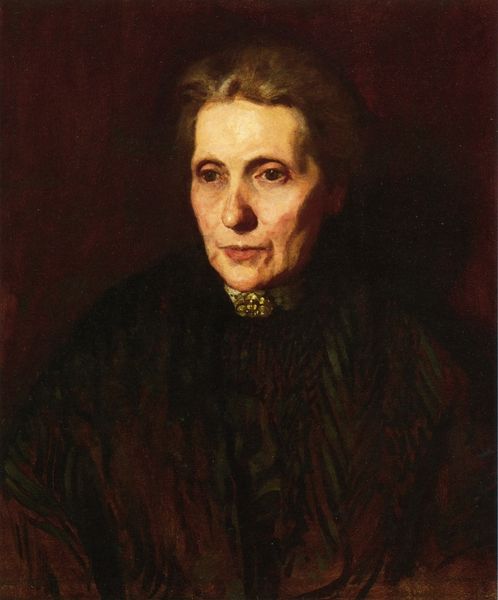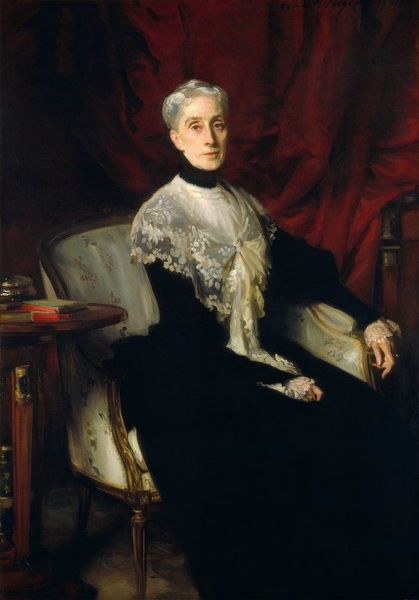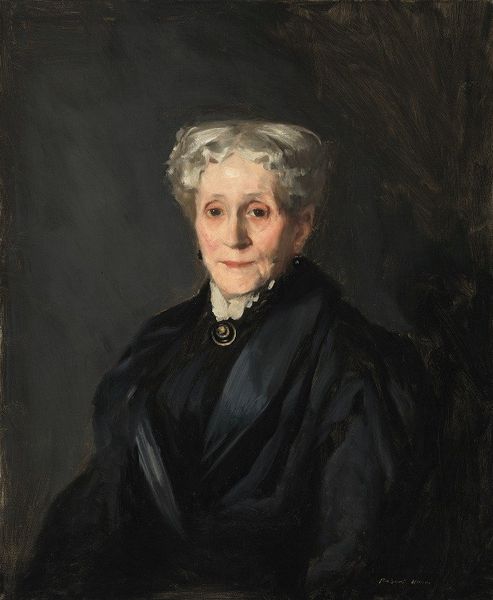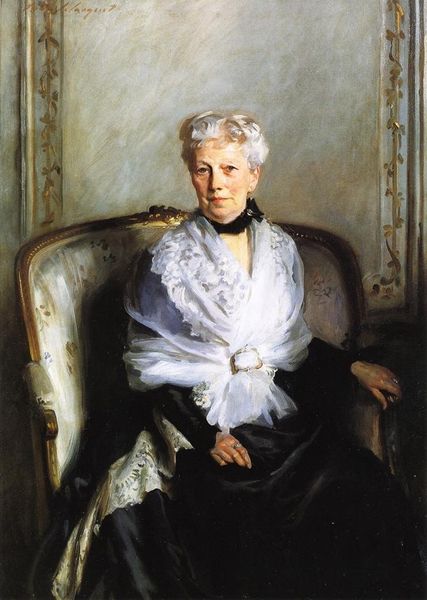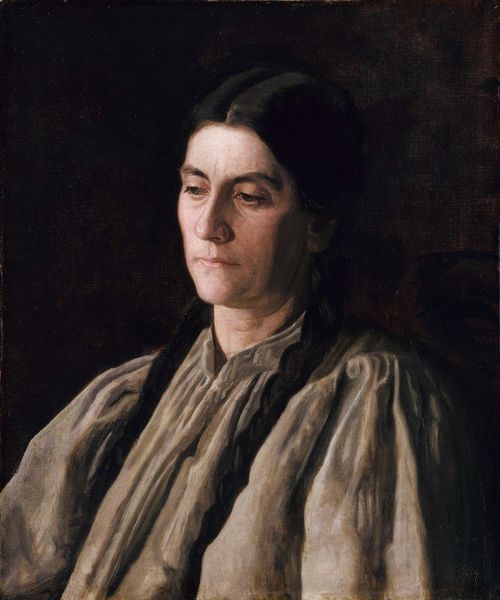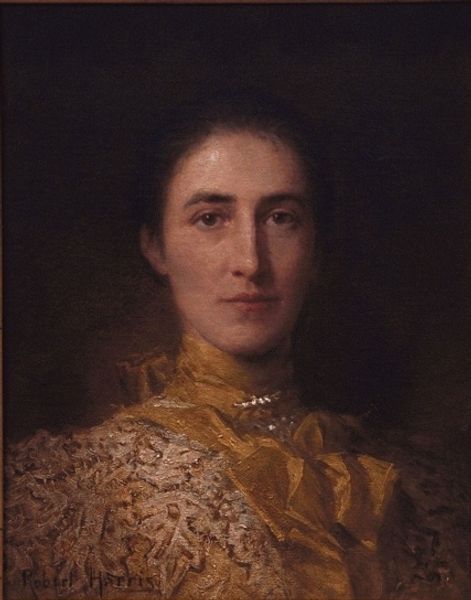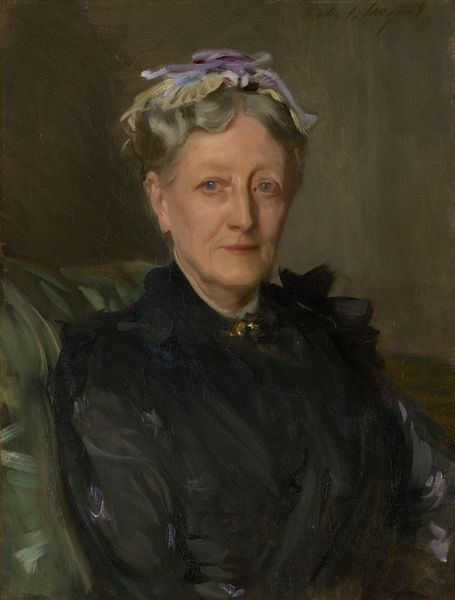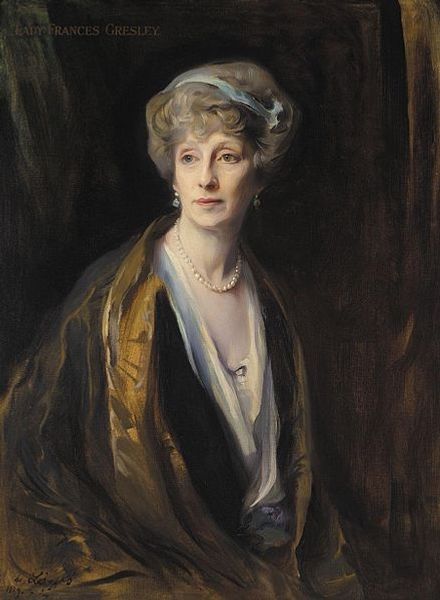
painting, oil-paint
#
portrait
#
painting
#
oil-paint
#
romanticism
#
realism
Copyright: Public domain
Curator: Looking at "Mrs. Richard Day" by Thomas Eakins, there’s a certain… gravity. Something about the darkness surrounding her makes me feel a deep sense of contemplation. Editor: It certainly does invite reflection. I see it as a study in societal roles, really. Here we have a portrait, but the absence of defining historical markers allows her image to act as a reflection on all women relegated to supporting roles, rather than actively defining their own historical presence. Curator: An interesting reading, given that in portraiture, women were so often defined only by their relationships to powerful men. And what do you make of the tight composition of the image? The sitter's proximity to the picture plane is so immediate that, for me, it intensifies her gaze, which conveys authority but also an awareness of being looked at. It gives her presence the quality of enduring memory. Editor: Yes, exactly! Though an unconventional authority perhaps? This isn’t the pomp of nobility, but the strength gleaned from a lifetime of navigating those constraints. Her subtle lace and pinned-up hair speaks to her awareness of social position, perhaps reflecting a deep understanding of how power truly works in society. I notice Eakins focuses intently on her face, capturing not just a likeness, but the depth of experience etched in the subtle lines around her eyes. It is quite realistic. Curator: Absolutely. Eakins avoids idealization in favor of portraying Mrs. Day with unflinching realism. To me, this approach reveals the quiet strength in his subject. The gray hair isn't concealed; the lines around her mouth tell a story of a long life lived. How does this inform your reading? Editor: It suggests the gaze of an artist who understands that the political is intensely personal. Instead of celebrating idealized beauty, he chooses to reveal the enduring quality of lived experience. How much can we consider portraits made of female sitters without imagining the domestic expectations placed on them, their erasure in historical record, or their relationship with beauty standards? Curator: These elements enrich the symbols embedded here and offer an access to history. It goes beyond likeness. There's something universally recognizable in her face. Something both familiar and powerful. Editor: That’s it exactly. Through her portrait, we find a shared understanding, or perhaps more of an understanding, about ourselves. Curator: Indeed. It challenges us to remember not just a person, but the narratives of resilience and resistance in the face of invisibility that are always present, always relevant.
Comments
No comments
Be the first to comment and join the conversation on the ultimate creative platform.
